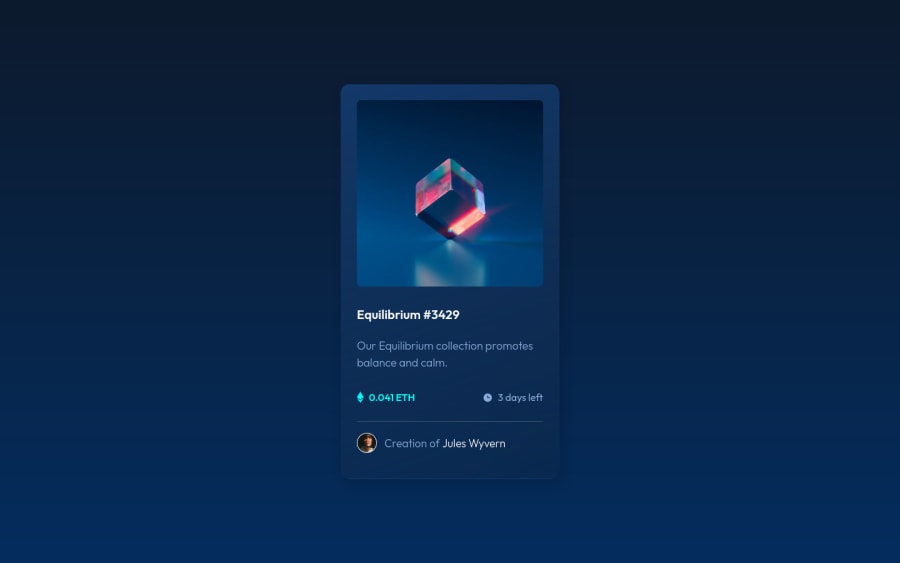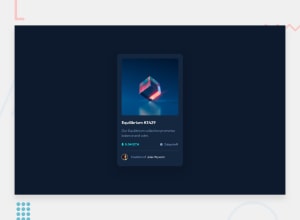
Submitted over 2 years ago
NFT Preview Card (Vanilla CSS + Custom Design and Hover Effects)
@correlucas
Design comparison
SolutionDesign
Solution retrospective
👾 Hello, Frontend Mentor coding community. This is my solution for the NFT Profile Card Component.
👻This the last of my old solution that I've cleaned the HTML code and CSS(even if is not the cleanest possible yet). Since now I'll submit only new challenges. I've changed a little bit the design and add some custom hover effect inside all elements card elements.
- 🎨 Custom Gradient Design
- 🥃 Color Spinning hover on text
- 🎨 Custom Icon Hover effect
Feel free to leave any feedback about my design chances and help me improve my solution or make the code clean!
Community feedback
Please log in to post a comment
Log in with GitHubJoin our Discord community
Join thousands of Frontend Mentor community members taking the challenges, sharing resources, helping each other, and chatting about all things front-end!
Join our Discord
